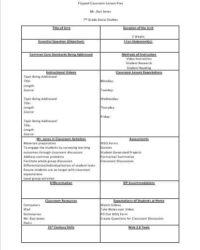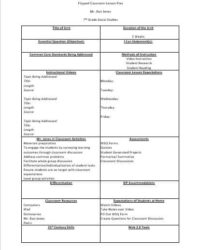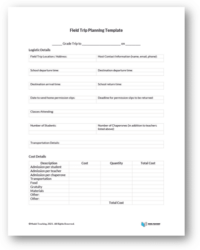In the bustling world of education, finding a truly effective way to plan lessons can feel like searching for a needle in a haystack. Traditional lesson planning often starts with activities, then moves to assessments, and finally, maybe, considers what students should actually learn. But what if we flipped that script? What if we started with the destination in mind, just like planning a trip? This is the fundamental idea behind the backwards design model, a powerful framework that transforms how educators approach teaching and learning, ensuring every moment in the classroom is purposeful and impactful.
Embracing the backwards design model means beginning with the end in mind. It encourages us to first identify what we want students to know and be able to do, then determine how we’ll know they’ve learned it, and only then do we design the learning experiences. This logical progression ensures alignment between goals, assessments, and instructional activities, leading to clearer objectives, more meaningful learning, and ultimately, better outcomes for students. It’s a game-changer for anyone looking to create more cohesive and effective learning environments.
Understanding the Core of Backwards Design for Effective Teaching
At its heart, backwards design is a common-sense approach that simply puts the cart behind the horse, where it belongs. Instead of focusing on what activities to do, it prompts educators to think deeply about the learning outcomes first. Imagine a builder starting a project; they don’t just grab tools and materials willy-nilly. They envision the finished structure, draw blueprints, and plan every step to achieve that final vision. Teaching should be no different. This model provides a clear roadmap, ensuring that every instructional decision contributes directly to the desired learning.
The beauty of this framework lies in its intentionality. By defining success criteria upfront, you gain immense clarity on what mastery looks like. This clarity not only guides your teaching but also empowers students, giving them a clear understanding of what they are expected to achieve. It moves away from merely “covering content” and shifts towards “uncovering understanding,” promoting deeper learning and application of knowledge rather than rote memorization.
Furthermore, backwards design inherently encourages differentiation and equitable teaching practices. When you know precisely what the end goal is, you can more effectively plan varied pathways and supports to help all students reach that goal, regardless of their starting point. It allows for flexibility in instructional methods while maintaining focus on the essential learning objectives, creating a more inclusive and responsive classroom environment for everyone involved in the learning process.
Adopting this approach can significantly reduce the feeling of “teaching to the test” because the assessments are designed to genuinely measure understanding of the core concepts, not just isolated facts. It fosters a culture where assessment is seen as an ongoing process of gathering evidence of learning, providing valuable feedback for both students and teachers to adjust and improve.
The Three Stages Explained
The backwards design model is typically broken down into three distinct, yet interconnected, stages:
- Stage 1: Identify Desired Results: This initial phase involves clearly defining what students should know, understand, and be able to do by the end of the unit or lesson. This often includes unpacking content standards, identifying enduring understandings, and formulating essential questions that guide inquiry.
- Stage 2: Determine Acceptable Evidence: Once the desired results are clear, the next step is to consider what acceptable evidence will look like to demonstrate that students have achieved those results. This involves designing assessments, both formative and summative, that align directly with the learning goals.
- Stage 3: Plan Learning Experiences and Instruction: Only after the first two stages are thoroughly addressed do you begin to plan the specific learning activities, teaching strategies, and resources that will help students acquire the necessary knowledge and skills to achieve the desired results and successfully demonstrate their understanding.
Crafting Your Own Backwards Design Model Lesson Plan Template
Translating the robust principles of backwards design into daily practice becomes much smoother with a well-structured template. A backwards design model lesson plan template isn’t just a blank sheet; it’s a guide that prompts you to ask the right questions at each stage, ensuring you don’t miss any crucial steps in the planning process. It provides a consistent framework, helping you organize your thoughts and ensure alignment from beginning to end, streamlining your planning time and maximizing its effectiveness.
When you start to fill out your backwards design model lesson plan template, you’ll find yourself naturally prioritizing key understandings over a list of activities. This shift in mindset empowers you to create lessons that are not only engaging but also deeply meaningful and directly tied to measurable outcomes. It helps prevent the common pitfall of designing fun activities that don’t necessarily lead to the intended learning, ensuring every moment in your classroom is intentionally designed for student success.
Utilizing such a template also facilitates collaboration among teaching teams and ensures consistency across classrooms addressing similar objectives. It becomes a shared language for discussing curriculum, assessment, and instruction, fostering a more coherent and aligned educational experience for all students. Think of it as your instructional blueprint, ready to guide you through building impactful learning experiences.
- Lesson Title and Subject Area: Basic identifying information for the lesson.
- Grade Level and Time Allotment: Helps in contextualizing the lesson for specific learners and planning time effectively.
- Desired Results: Clearly state learning objectives, content standards, enduring understandings, and essential questions.
- Assessment Evidence: Detail performance tasks, quizzes, observations, or other methods that will demonstrate student understanding.
- Learning Plan: Outline the sequence of learning activities, instructional strategies, materials, and resources needed for the lesson.
- Differentiation and Supports: Plan for how you will address diverse learner needs, including scaffolding and enrichment opportunities.
- Reflection: A space to consider what worked well, what could be improved, and next steps for future instruction.
Implementing the backwards design model into your teaching practice is more than just a planning technique; it’s a pedagogical paradigm shift. By consistently beginning with the desired outcomes, you cultivate a teaching environment that is purpose-driven, highly effective, and deeply enriching for both educators and students alike. It empowers you to create learning experiences that are truly impactful, ensuring that every minute of instruction is aligned with clear, measurable goals.
Embracing this intentional approach to lesson planning ultimately leads to more confident teaching and more engaged learning. It’s a powerful tool that helps transform abstract standards into concrete, achievable learning goals, making the complex process of education more manageable and profoundly rewarding. Start planning with the end in mind, and watch your students achieve beyond expectations.


